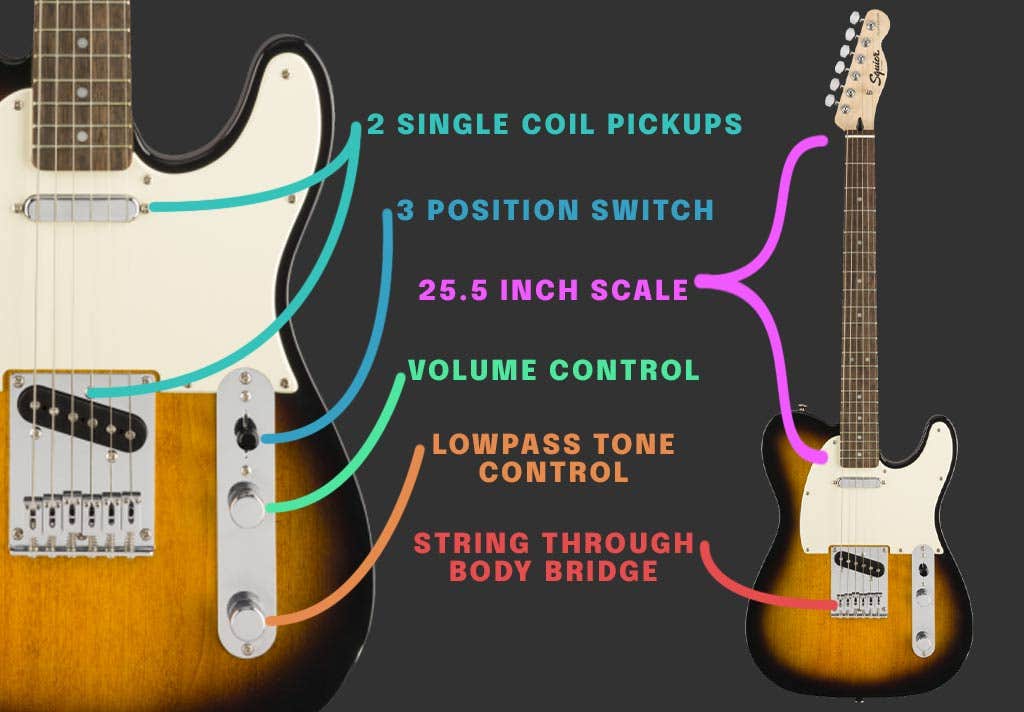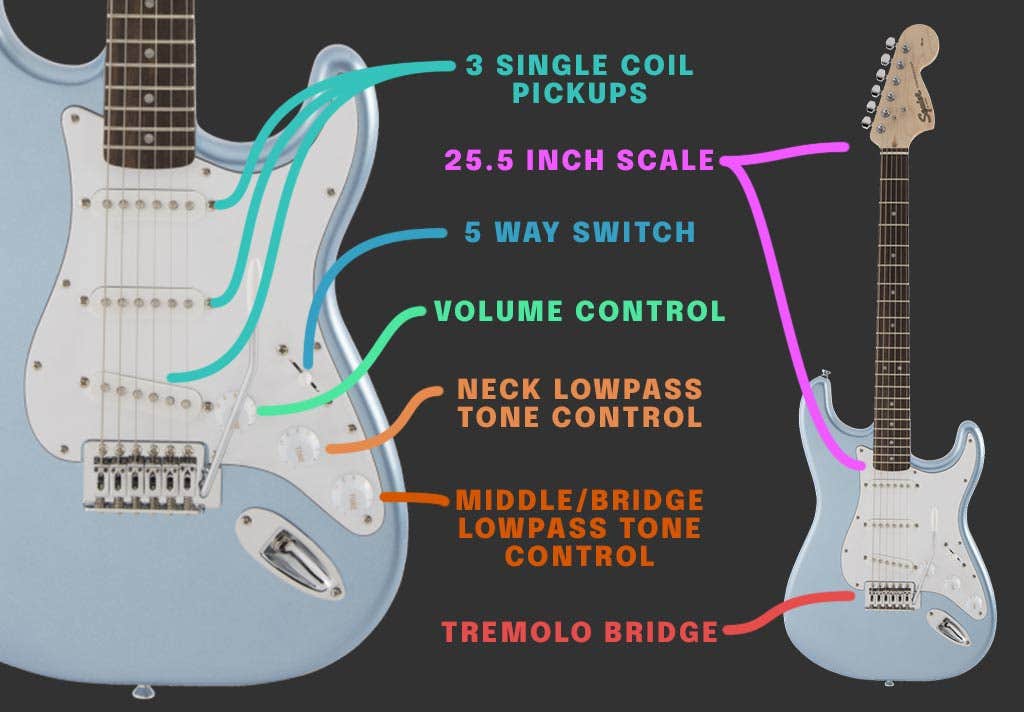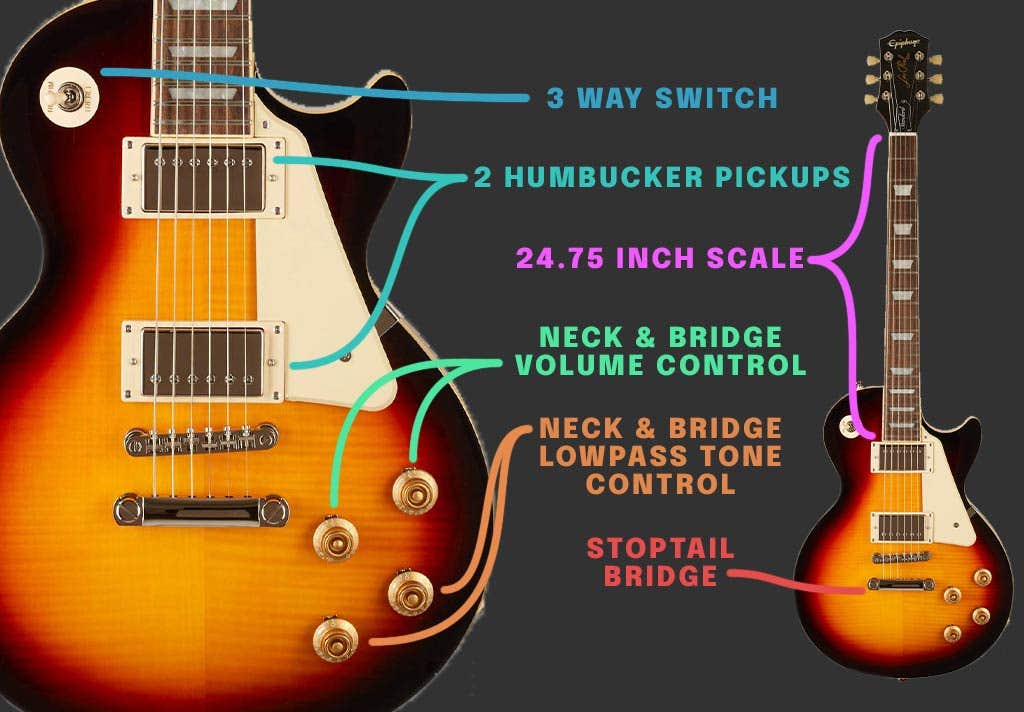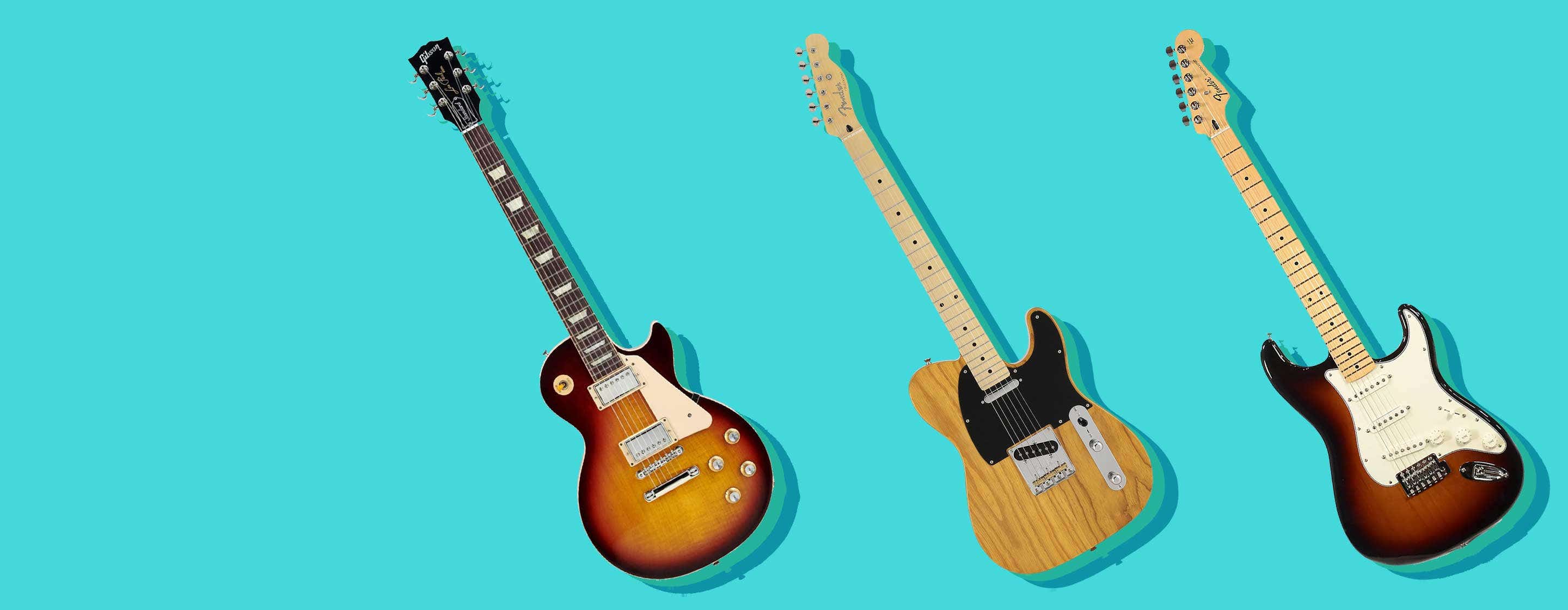Style Is Substance, Especially If You're Picking Your First Guitar.
Its style and tone will likely influence what you’ll sound like for next several years as you move past the basics and develop your individual style. So it’s going to be important to pick out something that reflects what you want to play and the genres you’ll be pulling from. Let’s run through some guitars you should consider depending on what you’ll want to play.
The Original and Classic Twang.
The signature twinkling top end and biting bottom end is something that the Telecaster has in spades. Country and Rock have been using this guitar since its inception as the Broadcaster for good reason.
Its two single coil pickups, one covered and one exposed have a wide range of uses. Each one has a unique characteristic but combined give a hum free, wide ranging sound that can be chosen with the 3-Way switch. The strings can be fed through the bridge plate or body to make tuning stay rock solid regardless of how hard you’re playing, plus the bridge adds its own unique character to the bridge pickup that you won’t find on any other guitar. They also have a 25.5 inch scale length which is on the longer end of neck lengths.


Artists like Jimmy Page, Johnny Greenwood, Bruce Springsteen and Jeff Buckley have used them for years to achieve the sound they need without bells and whistles of more complex guitars. A great starter Telecaster would be the Squier Affinity or Bullet series.
Jack of All Trades, Master Of........ All Trades. Introducing The Stratocaster.
Let’s say you want that complexity, you need to have as many tone options as possible when you’re playing. That’s where a Stratocaster comes in.
The bigger brother to the Telecaster, this guitar has an extra pickup, and extra tone knob and a tremolo system to boot. Most famous in the hands of people like Jimi Hendrix, Eric Clapton, David Gilmour, John Mayer…..the list could go on for years. While still using single coil pickups, the addition of the middle pickup means you get an extra sound to play with, as well as combine it with the neck and bridge pickups to achieve a thicker sound while retaining the qualities of the neck or bridge using the 5-way switch. The tremolo system lets you use a whammy bar to pitch your notes up or down quickly and return to standard tuning in an instant. You can hear this best in surf rock and dream pop where the chords waver and glide.


The guitar has seen countless years in the blues scene but has made its way into all genres in one way or another. Distorted or clean, it’s a jack of all trades. Our picks are the Squier Affinity series or the Yamaha Pacifica’s which replace the bridge single coil with a humbucker.
If You Want to Crank Your Gain to 10, Punch On Your Metal Zone and Wail Til Your Ears Bleed, You Need a Les Paul.
The signature boom of its humbucker pickups is inescapable; Slash, Pete Townshend and Joe Bonamassa swear by them as the be all, end all guitar. A humbucker is two single coil pickups paired to remove any hum and noise from the signal. This means you can overdrive and distort the signal as much as you want with little feedback. The body is also much bigger and heavier than a Tele or Strat so more energy is transferred from the strings into the guitar, giving you longer sustained notes and natural resonance through the hardtail bridge.


This makes the guitar perfect for hard rock, metal and jazz. It also has a shorter scale length of 24.75 inches, so if you have smaller hands notes will be easier to reach. Our pick is the Epiphone Les Paul Studio LT series.
There Are Hundreds of Combinations of Bodies, Necks, Pickups and Bridges Out There, But These Three Guitars Can Get You Through Any Situation You Can Find Yourself In.
If you’re curious about what guitar will be best for you our friendly guitar staff are more than happy to walk you through what’s out there! Give us a call or email and we’ll get you playing in no time!








